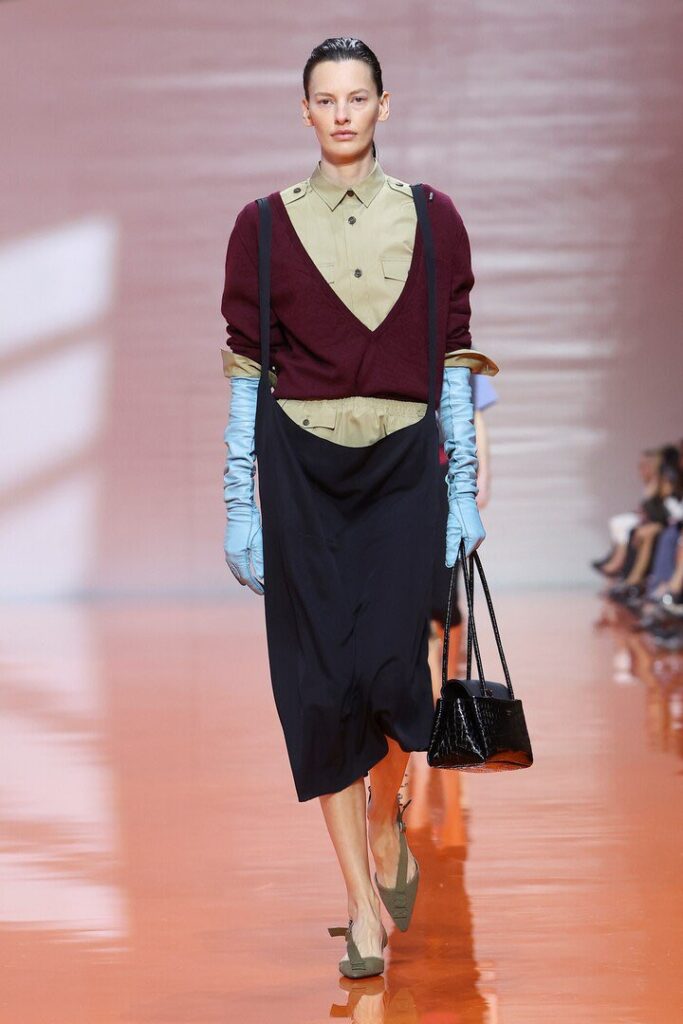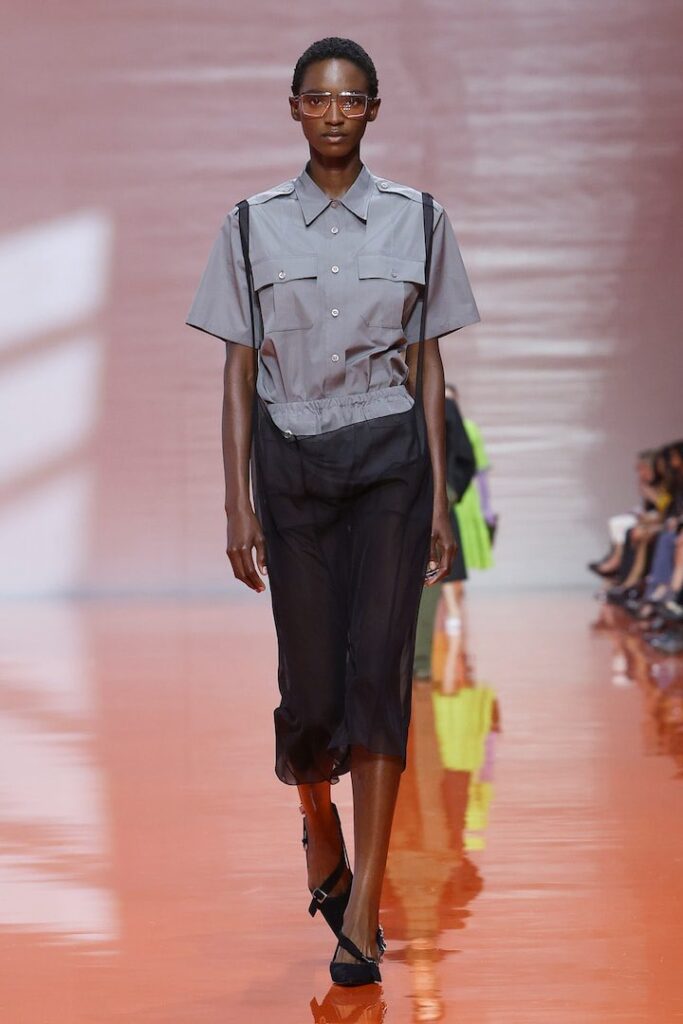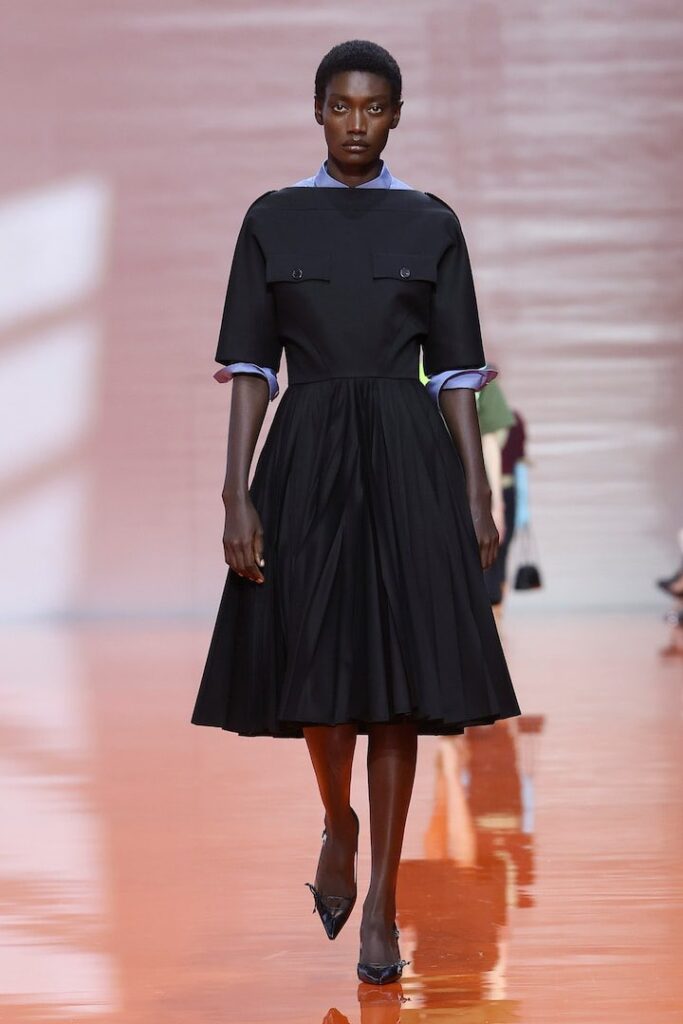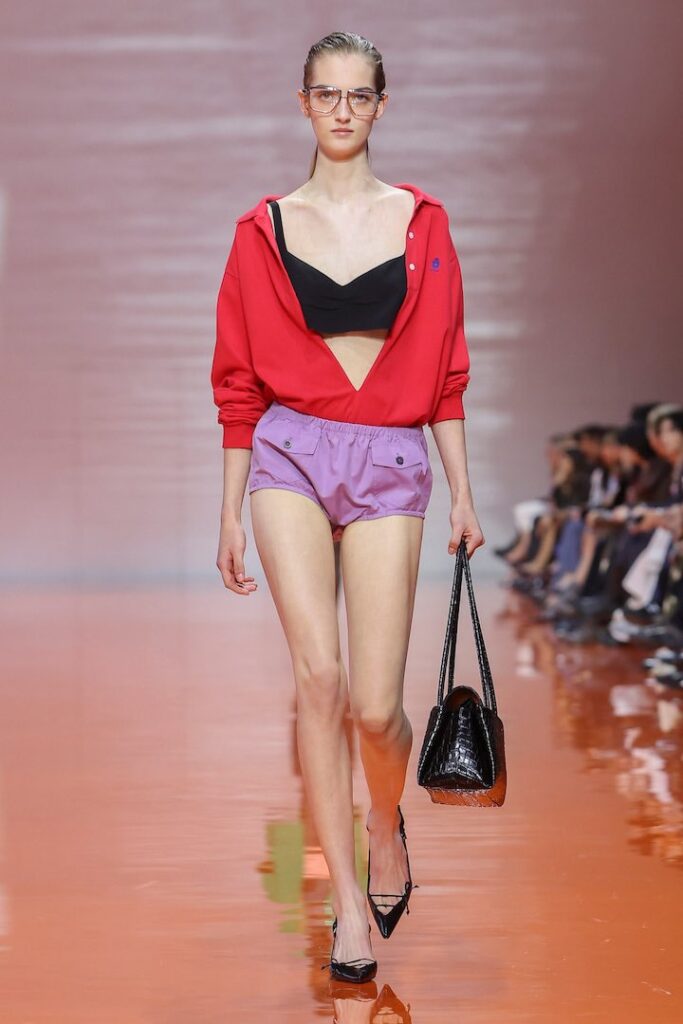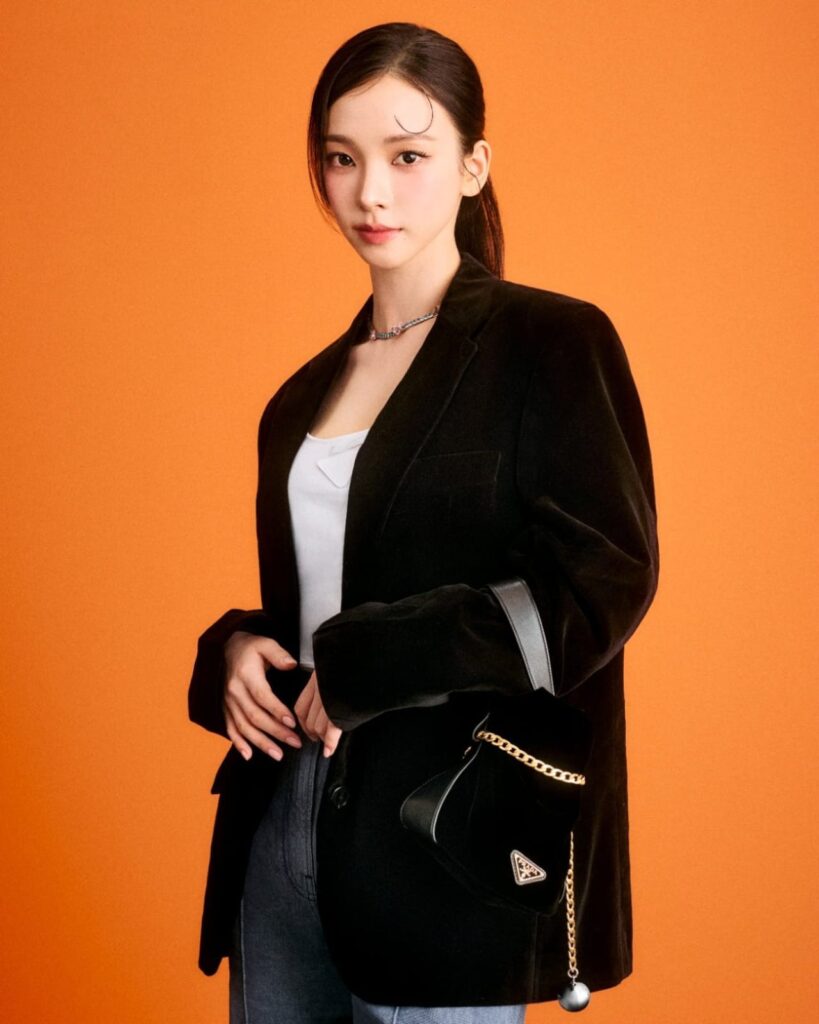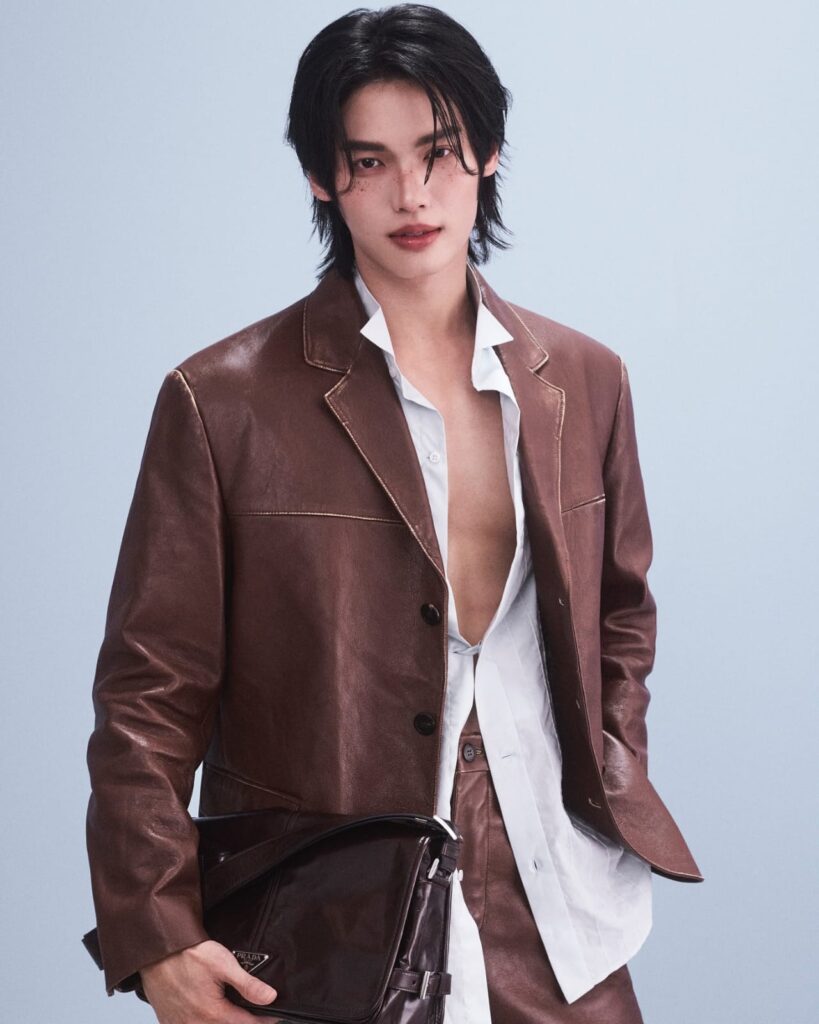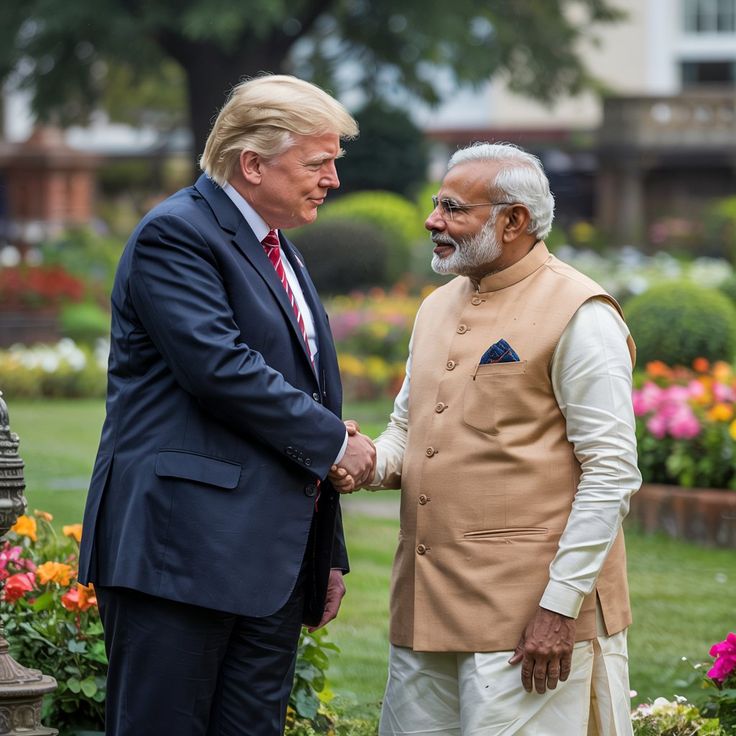Milan in late September always feels like a city on a stage. The pavements are filled with editors rushing from show to show, cameras flashing at influencers posing on cobblestones, and the quiet hum of anticipation that only fashion week can create. But in 2025, the Milan Fashion Week Womenswear Spring/Summer 2026 (SS26) felt more than just another week of glamour. It became a crossroads: a season of powerful farewells, bold reinventions, and an undercurrent of optimism for what Italian fashion can mean in the years to come.
From 23–29 September 2025, Milan hosted more than 60 shows and countless presentations across palaces, industrial warehouses, gardens, and even the streets themselves. Every corner of the city buzzed with creativity. While some brands leaned into spectacle — Diesel turning the city into a giant treasure hunt — others went minimal and deeply personal, like Giorgio Armani, who bowed out with the most emotional finale the city has seen in decades.
So what really happened this week in Milan? Let’s walk through the highlights, the heartbeats, and the style notes that will shape Spring/Summer 2026 wardrobes worldwide.
A Week Wrapped in Emotion: Armani’s Last Bow
The heart of Milan Fashion Week SS26 was not just about clothes. It was about legacy.
On the final evening, the fashion world gathered in near silence at the Pinacoteca di Brera, one of Milan’s most historic cultural venues. Giorgio Armani, the man who defined Italian elegance for nearly half a century, presented his last womenswear collection. There were no flashing gimmicks, no over-the-top theatrics. Instead, there was grace: soft tailoring, fluid fabrics, muted tones, and a soundtrack of live piano music played by Ludovico Einaudi.
For many in the room, it wasn’t just a show; it was a farewell. Editors wiped away tears, and buyers rose for a standing ovation. Armani’s clothes, always understated yet powerful, reminded everyone why he was called “Il Maestro.” His departure marked the end of an era, but also opened the door for a new generation to take Italian fashion forward.
Prada: Wearability Meets Concept
If Armani was the soul of Milan, Prada was its restless, intellectual heart.
Miuccia Prada and Raf Simons once again proved they know how to turn high-minded references into something surprisingly wearable. Their SS26 collection was a kaleidoscope of cultural nods — sharp tailoring layered with sheer organza, candy-coloured slips worn under cropped jackets, and playful accessories that felt both ironic and chic.
The most striking part? These weren’t just museum pieces. They were clothes you could actually imagine women wearing — on a night out in Milan, at an art opening in Paris, or even walking down the streets of Tokyo. Critics called it “conceptual fashion made practical,” and in many ways, it set the tone for a season where wearability became the new luxury.
Gucci: Cinema on the Runway
Gucci chose a different stage altogether. Instead of a traditional runway, the brand unveiled its SS26 collection through a film premiere-like event. Guests were seated in a darkened theatre, where a cinematic short unfolded, blurring the line between movie and fashion show.
The clothes themselves were classic Gucci — bold, maximalist, and dripping with personality. Think oversized sunglasses, embroidered denim, jewel-toned dresses, and dramatic tailoring. But the storytelling made it feel like more than just clothes; it was fashion as entertainment, a reminder that in the digital age, a show must travel far beyond the room it’s staged in.\
Versace: Loud, Confident, Unapologetic
Donatella Versace has never been one to whisper. SS26 was no exception.
The collection was an explosion of colour: electric blues, hot pinks, lime greens, and bold yellows — often worn together in fearless combinations. There were slinky mini dresses, cropped blazers, and statement denim that felt built for a generation that doesn’t shy away from attention.
If Armani’s farewell was a quiet hymn, Versace’s runway was a full-blown pop anthem. The clothes celebrated confidence, sexuality, and unapologetic fun. And judging by the cheers from the front row, the message landed perfectly.
Bottega Veneta: Craft in Focus
While some brands went loud, Bottega Veneta chose to whisper with precision.
The house leaned heavily into its signature leatherwork, presenting bags and woven pieces that felt like living sculptures. But what stood out was the clothing: slouchy trousers, oversized shirts, and dresses that hugged the body without overwhelming it. The emphasis was on texture and touch — clothes that invited you to run your hands across them, to feel the luxury rather than just see it.
It was a reminder that in the world of fleeting trends, craftsmanship never goes out of style.
The Trends That Will Define SS26
Beyond the marquee names, the week revealed several trends that will ripple through wardrobes globally:
- Colour Blocking & Pastels Revived: Designers embraced bold solid colours and soft pastel palettes. Expect to see summer wardrobes filled with lemon yellows, mint greens, and playful oranges.
- Relaxed Tailoring: Rigid suits are giving way to slouchy silhouettes — think wide-legged trousers, cropped blazers, and jackets that drape rather than dominate.
- Lingerie as Outerwear (Reinvented): The lingerie trend hasn’t died down, but it’s evolving into subtle layering rather than shock value — bandeaus under blazers, corsetry hidden in construction.
- Sustainable Statements: Many brands experimented with recycled fabrics, upcycled materials, and eco-conscious production. Some felt authentic; others leaned toward greenwashing. But the pressure for proof is now louder than ever.
- Tactile Luxury: From leather weaving at Bottega to soft knits at independent labels, textures are the new logos. Consumers want clothes that feel as good as they look.
The Front Row: Star Power and Social Media Buzz
Milan’s fashion week isn’t just about the runway — it’s about who’s watching it.
The front rows were packed with Hollywood stars, music icons, and influencers who turned sidewalks into secondary runways. Cameras flashed as actors, singers, and even athletes made appearances in designer looks. The much-discussed meeting of Meryl Streep and Anna Wintour became a meme-worthy moment, while TikTok flooded with videos of influencers twirling in bright outfits outside show venues.
For brands, these viral moments are almost as important as the collections themselves. In today’s world, a 10-second TikTok clip can carry a look to millions, faster than any magazine spread ever could.
Street Style: Milan as a Catwalk
Outside the official shows, Milan’s cobbled streets turned into a fashion carnival.
Editors wore tailored suiting with sneakers, influencers experimented with neon accessories, and locals mixed vintage finds with designer staples. Street style this season leaned toward practical chic: wide-legged pants, lightweight trench coats, oversized sunglasses, and bags large enough to actually carry something.
The mood? Effortless but intentional — the kind of style that makes you look twice without feeling forced.
Fashion as a Game: Diesel and Playful Shows
Perhaps the most unconventional moment came from Diesel, which staged a citywide “egg hunt.” Guests and locals alike were invited to hunt for hidden Diesel eggs across Milan, turning the fashion week experience into a playful treasure game.
It was a reminder that fashion doesn’t always need to take itself too seriously. In fact, some of the most buzzworthy moments of SS26 came not from haute couture gowns but from interactive, Instagrammable experiences.
Buyers and Retail Reality
Behind the glamour, Milan Fashion Week is a business event. Buyers from across the globe filled showrooms, eyeing what will land in stores next spring.
The consensus? Wearability is back. Buyers praised collections that balanced creativity with practicality, offering separates that can be mixed and matched, and capsules that translate easily into store windows. Colourful edits, sustainable fabrics, and textured tailoring are expected to dominate retail racks by early 2026.
Closing Reflections: Milan at a Crossroads
When the lights dimmed on Armani’s final bow, Milan Fashion Week SS26 ended not with fireworks but with reflection.
This was a season where the old and new met on the same stage. Armani’s farewell honored decades of discipline and grace, while houses like Gucci and Diesel experimented with new ways to reach audiences. The big theme was balance: between tradition and reinvention, spectacle and substance, exclusivity and accessibility.
For Milan, the message was clear — Italian fashion is not stuck in its past. It is evolving, experimenting, and reaching for new audiences while never losing sight of what makes it unique: craftsmanship, storytelling, and an ability to blend fantasy with real life.
As the last guests spilled out onto the Milanese streets, one thing felt certain: SS26 wasn’t just about next summer’s clothes. It was about fashion’s future.
Related News: Read More

